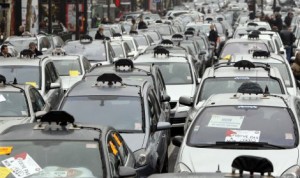 Population of France 2014
Population of France 2014
Based on the total number of births, total number of deaths, net migration rates, and the population of 2013, as of January 1, 2014, the current population of the French Republic is estimated to be about 65,821,000. The French population makes up only 0.9% of the total world population and ranks 21st in population rankings, behind Thailand, but in front of the United Kingdom. It is also considered to be the third-most populous country in Europe. At the end of 2013, the population of France was estimated to be about 64,291,280. Therefore, since the end of 2013, there has been a population increase of about 1,529,720 people or a population growth rate of about 2.38%. Based on the total land area and the total current population, the population density of France is estimated to be about 119.31 people per square kilometer or 309.02 people per square mile.
Geography of France 2014
The French mainland spans 551,695 square kilometers or 213,010 square miles, which is the largest area among all of the European Union members. It borders eight European nations: Belgium, Luxembourg, Germany, Switzerland, Italy, Monaco, Spain, and Andorra. The highest point in France is actually the highest point in Western Europe as well. Mont Blanc, a mountain in the Alps on the border of Italy and France, reaches 15,782 feet. Major rivers in France include the Seine, the Loire, the Garonne, and the Rhone. Geographic features range from mountain ranges to plains along the coasts. Lastly, France has the second-largest Exclusive Economic Zone in the world, spanning 4,260,637 square miles.
French Government 2014
The French government is considered to be a unitary semi-presidential republic, combined with its democratic traditions. On September 28, 1958, a referendum by the French people accepted the constitution to be law. The Executive Branch is made up of two figures: President and Government. The President is the head of state and is directly elected by the voters. The Prime Minister, who heads the Council of Ministers, leads the Government branch of the Executive Branch. Unlike the method of choosing the President, the President appoints the Prime Minister. The Legislative Branch is made up of a bicameral Parliament. The Parliament is comprised of the National Assembly and the Senate. The National Assembly carries a lot of power, including the power to dismiss the Cabinet. The members of the Assembly are directly elected and represent the districts and the people. The Senate is chosen by the Electoral College and remains in office for 6-year terms. Lastly, the two major political parties are the left-wing French Socialist Party and the right-wing Union for a Popular Movement Party.
French Economy 2014
In terms of Purchasing Power Parity, France has the seventh largest economy in the world and the second largest economy in the European Union. As of 2010, France also ranked fourth in the Fortune Global 500, which is a higher ranking than both Germany and the United Kingdom. As of 2002, the euro completely replaced the franc as the form of currency. The government is the majority owner of many infrastructure industries, including railway, electricity, aircraft, and nuclear power. The most important part of the economy is the financial sector, which includes the banking and insurance industries. In fact, France has the world’s largest insurance company. Lastly, in July of 2013, the unemployment rate was recorded to be 11%.
 Transportation in France 2014
Transportation in France 2014
As of 2008, the French railway system, operated by SNCF, the French National Railway Company, consists of approximately 29,473 kilometers or 18,314 miles of rails. Part of the railway system includes a high-speed train system, which reaches around 320 kilometers per hour or 199 miles per hour. In terms of roadways, there are 1,027,183 kilometers or 638,262 miles of usable roads throughout France. As a result, France has the most extensive network of roads in all of Europe. There are no registration fees or road taxes, but there are tolls throughout the country. Lastly, there are 475 airports throughout France. The largest and busiest airport in France is Charles de Gaulle Airport, which is in Paris.
Language in France 2014
The Constitution of France establishes French as the official language of France. Despite the fact that there is no obligation for publications to be written in French, all commercial and workplace communications must be in French. Besides French, though, there are 77 vernacular minority languages throughout the country. France has attempted to bring more prominence to the language in the international community, but since the United States emerged as a larger power than France, English is more prominent internationally than French.
Health Care in France 2014
According to the World Health Organization, France has the best performing health care system in the world in terms of availability and organization of health care providers. France has a universal health care system, which receives its funding through the government insurance. The goal of the health care system is to give patients low-cost health care, flexible choices in health care, but also the doctors can have autonomy. The insurance receives funding through the compulsory payments by individual citizens. The level of income determines the amount of health insurance a person pays for. The government pays for about 80% of the health care costs of a patient. In fact, the more sick or the more things that you need treatment for, the less you pay. About 65% of the hospital beds are provided by public hospitals, 15% by private non-profit facilities, and 20% by private for-profit facilities. There currently exist five different health-care funds: General, Agricultural, Students, Independent, and Public Servants. The average life expectancy is 78 years for men and 85 years for women. The physician-to-patient rate is 3.22 physicians for every 1000 patients. Lastly, France is ranked 128th in terms of the fattest countries, despite the growing trend of obesity in France.
Education in France 2014
The Ministry of National Education, headed by the Minister of National Education, regulates the education system throughout the country. All teachers are hired by the state, and, in fact, teachers of public primary and secondary schools are civil servants, provided by the state. The school year lasts from September to early July. At age 6, students begin primary school, where they learn to develop their reading and writing skills. Primary school lasts from age 6 to about age 11, when the student begins their secondary education. The secondary education is split up into two levels. Students attend the first level of their secondary education for about four years, where they typically study French, Mathematics, History, Geography, and Citizenship. The second level lasts three years and is broken up into three series of studies: natural sciences, social sciences, and languages. Students also have an option to attend a professional or vocational school at this point, to help them prepare for a future career. Lastly, the higher education in France is similar to the United States: Bachelor, Master, and Doctorate levels. The Bachelor level only takes 6 semesters, while the Master level takes 4 semesters.
France World Cup Team Profile
Other Resources


